The type II deiodinase is retrotranslocated to the cytoplasm and proteasomes via p97/Atx3 complex
- PMID: 24196352
- PMCID: PMC3857201
- DOI: 10.1210/me.2013-1281
The type II deiodinase is retrotranslocated to the cytoplasm and proteasomes via p97/Atx3 complex
Abstract
The type II iodothyronine deiodinase (D2) is a type I endoplasmic reticulum (ER)-resident thioredoxin fold-containing selenoprotein that activates thyroid hormone. D2 is inactivated by ER-associated ubiquitination and can be reactivated by two ubiquitin-specific peptidase-class D2-interacting deubiquitinases (DUBs). Here, we used D2-expressing cell models to define that D2 ubiquitination (UbD2) occurs via K48-linked ubiquitin chains and that exposure to its natural substrate, T4, accelerates UbD2 formation and retrotranslocation to the cytoplasm via interaction with the p97-ATPase complex. D2 retrotranslocation also includes deubiquitination by the p97-associated DUB Ataxin-3 (Atx3). Inhibiting Atx3 with eeyarestatin-I did not affect D2:p97 binding but decreased UbD2 retrotranslocation and caused ER accumulation of high-molecular weight UbD2 bands possibly by interfering with the D2-ubiquitin-specific peptidases binding. Once in the cytosol, D2 is delivered to the proteasomes as evidenced by coprecipitation with 19S proteasome subunit S5a and increased colocalization with the 20S proteasome. We conclude that interaction between UbD2 and p97/Atx3 mediates retranslocation of UbD2 to the cytoplasm for terminal degradation in the proteasomes, a pathway that is accelerated by exposure to T4.
Figures
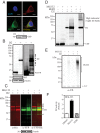
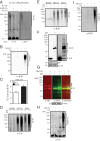
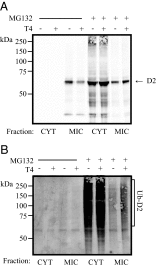
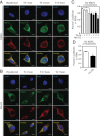
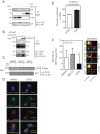
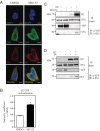
Similar articles
-
Regulation of retrotranslocation by p97-associated deubiquitinating enzyme ataxin-3.J Cell Biol. 2006 Sep 25;174(7):963-71. doi: 10.1083/jcb.200605100. J Cell Biol. 2006. PMID: 17000876 Free PMC article.
-
Inhibition of p97-dependent protein degradation by Eeyarestatin I.J Biol Chem. 2008 Mar 21;283(12):7445-54. doi: 10.1074/jbc.M708347200. Epub 2008 Jan 16. J Biol Chem. 2008. PMID: 18199748 Free PMC article.
-
Quality control: linking retrotranslocation and degradation.Curr Biol. 2006 Dec 19;16(24):R1035-7. doi: 10.1016/j.cub.2006.11.013. Curr Biol. 2006. PMID: 17174911
-
Roles of p97-associated deubiquitinases in protein quality control at the endoplasmic reticulum.Curr Protein Pept Sci. 2012 Aug;13(5):436-46. doi: 10.2174/138920312802430608. Curr Protein Pept Sci. 2012. PMID: 22812527 Free PMC article. Review.
-
The final moments of misfolded proteins en route to the proteasome.DNA Cell Biol. 2014 Aug;33(8):477-83. doi: 10.1089/dna.2014.2452. Epub 2014 May 15. DNA Cell Biol. 2014. PMID: 24833120 Free PMC article. Review.
Cited by
-
XAF1 promotes colorectal cancer metastasis via VCP-RNF114-JUP axis.J Cell Biol. 2024 Feb 5;223(2):e202303015. doi: 10.1083/jcb.202303015. Epub 2023 Dec 14. J Cell Biol. 2024. PMID: 38095639 Free PMC article.
-
Differences in hypothalamic type 2 deiodinase ubiquitination explain localized sensitivity to thyroxine.J Clin Invest. 2015 Feb;125(2):769-81. doi: 10.1172/JCI77588. Epub 2015 Jan 2. J Clin Invest. 2015. PMID: 25555216 Free PMC article.
-
Paradigms of Dynamic Control of Thyroid Hormone Signaling.Endocr Rev. 2019 Aug 1;40(4):1000-1047. doi: 10.1210/er.2018-00275. Endocr Rev. 2019. PMID: 31033998 Free PMC article. Review.
-
Endoplasmic reticulum-resident selenoproteins as regulators of calcium signaling and homeostasis.Cell Calcium. 2018 Mar;70:76-86. doi: 10.1016/j.ceca.2017.05.001. Epub 2017 May 4. Cell Calcium. 2018. PMID: 28506443 Free PMC article. Review.
-
Inhibitors of the AAA+ chaperone p97.Molecules. 2015 Feb 12;20(2):3027-49. doi: 10.3390/molecules20023027. Molecules. 2015. PMID: 25685910 Free PMC article. Review.
References
-
- Ciehanover A, Hod Y, Hershko A. A heat-stable polypeptide component of an ATP-dependent proteolytic system from reticulocytes. Biochem Biophys Res Commun. 1978;81:1100–1105 - PubMed
-
- Komander D, Rape M. The ubiquitin code. Annu Rev Biochem. 2012;81:203–229 - PubMed
-
- Mukhopadhyay D, Riezman H. Proteasome-independent functions of ubiquitin in endocytosis and signaling. Science. 2007;315:201–205 - PubMed
-
- Chau V, Tobias JW, Bachmair A, et al. A multiubiquitin chain is confined to specific lysine in a targeted short-lived protein. Science. 1989;243:1576–1583 - PubMed
Publication types
MeSH terms
Substances
LinkOut - more resources
Full Text Sources
Other Literature Sources
Research Materials

